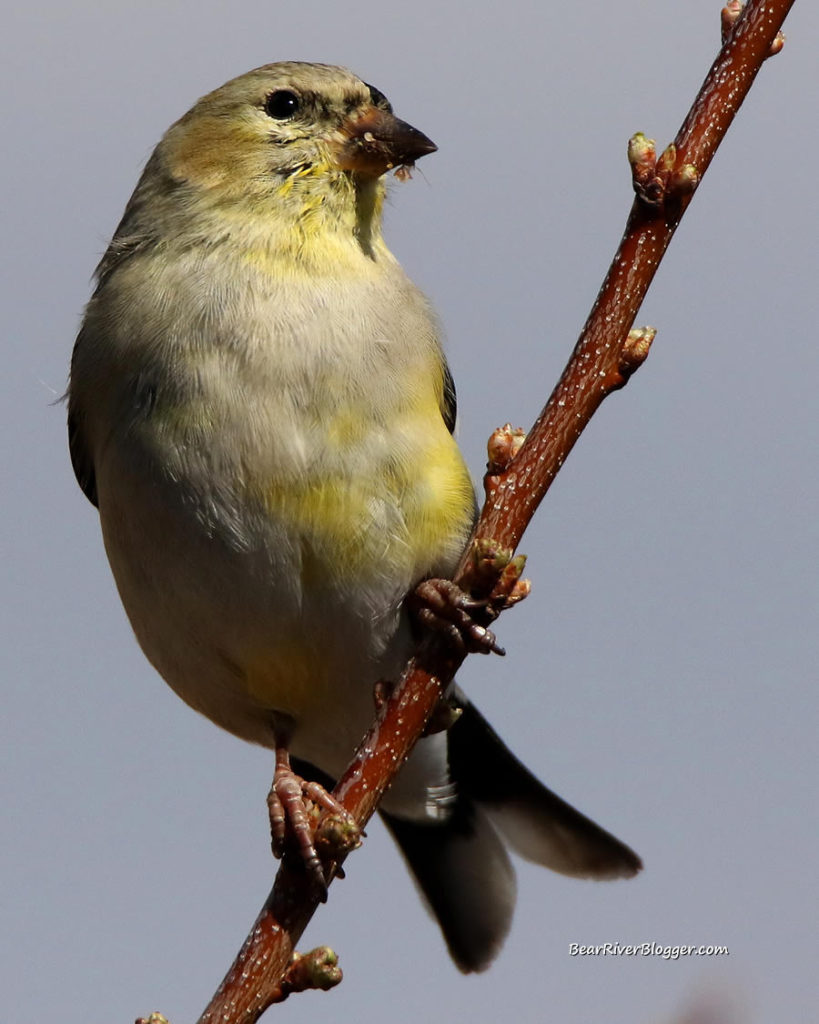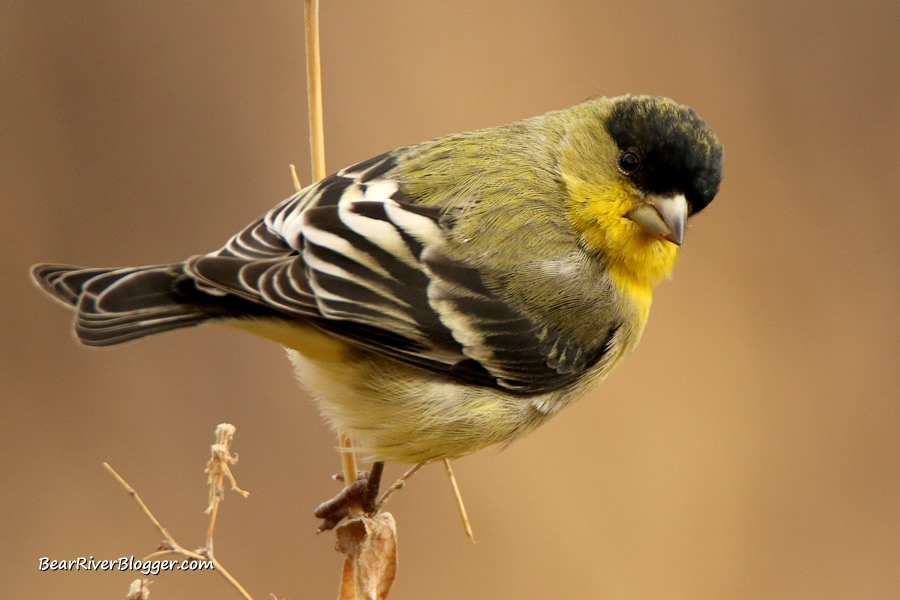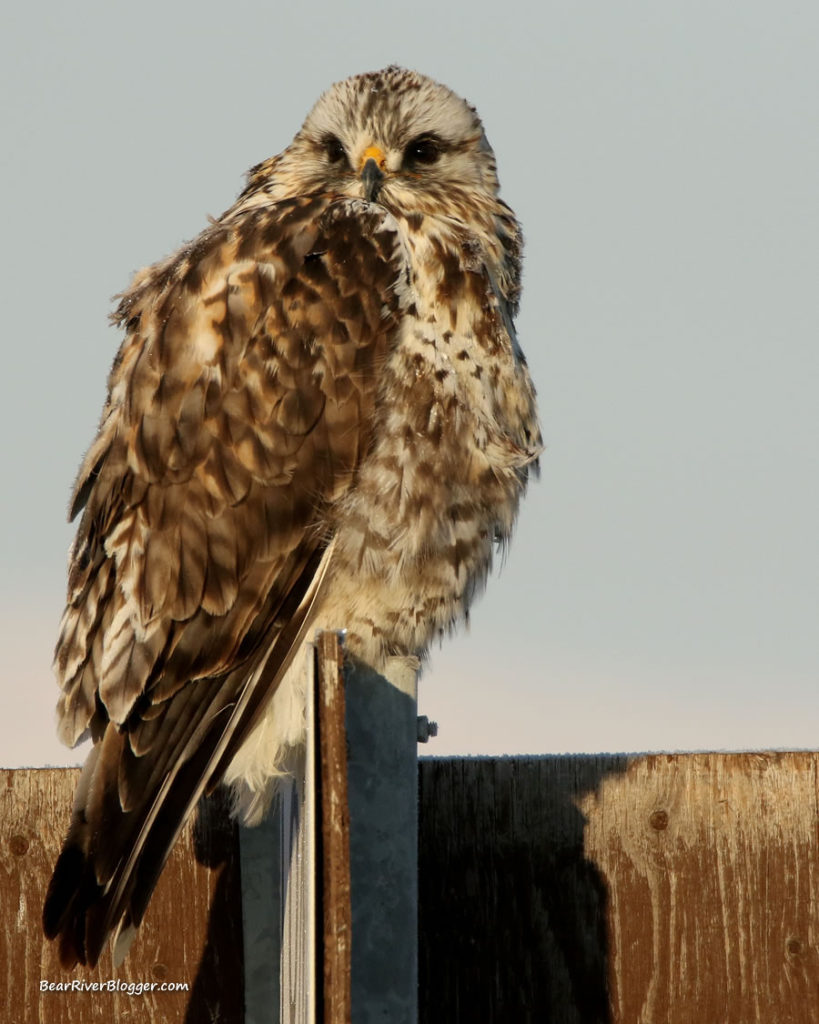If you ask me, I would say without any reservation, watching and, of course, photographing goldfinches in my own backyard is arguably one of the best ways to relax and reduce some of the stress and anxiety that our modern, fast-paced world oftentimes brings us.
They are such beautiful birds and are very easily attracted to almost any backyard within their natural range after a few simple modifications.
Depending on where you live and what season goldfinches are abundant in your neck of the woods, there are several elements you can utilize which will help attract these colorful beauties to your own yard.
This includes food, water, and nearby escape cover, all of which can and does help encourage a variety of bird species to visit the backyard no matter the time of year.
Some people, for example, who live in the southernmost parts of the United States only see the American goldfinch during the winter months.
In contrast, people who live along the U.S. and Canada border only see these brightly colored birds during the summer breeding season, but regardless of someone’s location, attracting goldfinches to your yard is basically the same concept no matter where you live and which of the three species is relevant to your region.
I am fortunate to have both the lesser and American goldfinches year-round in the yard, and quite often I see a dozen or more of each at any given time in my backyard, especially during the cold winter months.
It is quite enjoyable to see so many birds come to the property, and we actually started seeing goldfinches show up within a week or so after making a couple easy modifications to the backyard.
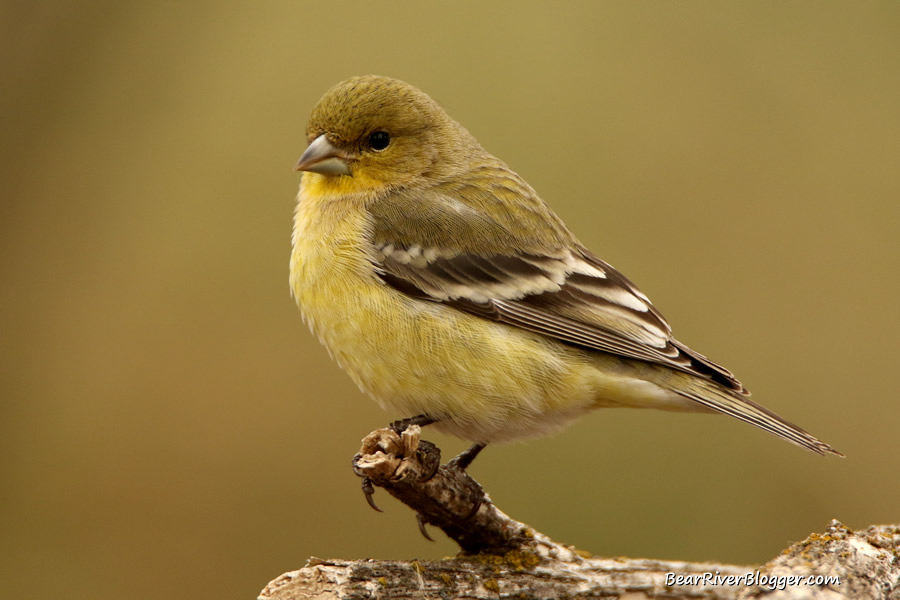
How to start attracting goldfinches to the backyard garden?
The quickest and easiest way to attract birds of all kinds, including goldfinches, to your yard is to put out a bird feeder. Providing food is a simple, yet powerful solution to bringing in a variety of birds to your property.
Once a couple of birds find the feeder, it’s only a matter of time before more and more birds, even ones of different species, mind you, will start showing up throughout the day.
This process can be sped up by placing the feeder near a tree or bush in your yard, locations where birds naturally congregate on their own and, thusly, can more easily find the food.
It really doesn’t matter which species starts coming to your feeder first, birds will, after all, attract other birds, and eventually, the sought after goldfinches will soon follow.
Our yard started out with mostly house sparrows, but just having that avian activity around the premises has, indeed, attracted other birds, and now we have nearly as many house finches and goldfinches as we do sparrows on any given day.
I would suggest don’t just put out food geared for attracting goldfinches but plan your feeding efforts for a variety of birds as well, allowing for this natural attraction between species to help bring in the birds for you.
You can always change your feeding program later on to a goldfinch-only suited feed once they are coming in regularly.
Birds of a feather really do flock together, and once you start feeding birds, you will find out just how a few birds can and will usually attract other birds to a feeder.
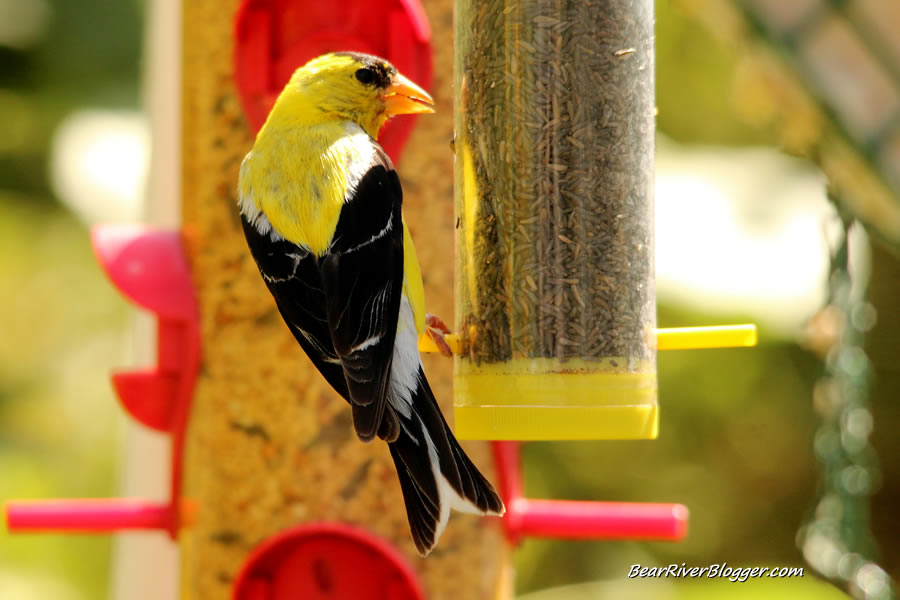
What is the best food for the goldfinch?
Goldfinches are seed eaters, and they eat a variety of seeds such as nyjer, black oil sunflowers, and millet.
I have used black oil sunflower seeds, variety mixes with several types of small seeds, suet, and thistle seed, and it is the thistle, oftentimes referred to as nyjer seed, which, hands down, attracts the most goldfinches over all the other types of bird feed combined, at least from my own personal experience, that is.
(Nyjer/Thistle seed is one of the best wild bird seeds we have found to regularly attract both American and lesser goldfinches.)
(As an Amazon Associate, I earn from qualifying purchases.)
We put out a variety of different seeds and feeders to attract a wide range of birds, and the goldfinches will, on occasion, utilize them all, but day in and day out it is the thistle seed they most definitely prefer over all the rest.
So what exactly is thistle or, more precisely, nyjer seed? The name ‘thistle seed‘ is a bit confusing because it doesn’t actually come from a thistle plant, but rather it’s a small, thin, black seed harvested from the African yellow daisy (Guizotia abyssinica).
It has a high oil content and is a very nutritious and popular food source for many birds, especially for finches and goldfinches alike.
One thing that separates thistle seed from most, if not all other bird seeds, is the USDA requires all nyjer seed imported into the United States to be heat-treated, effectively sterilizing the seed so it won’t germinate and grow on its’ own.
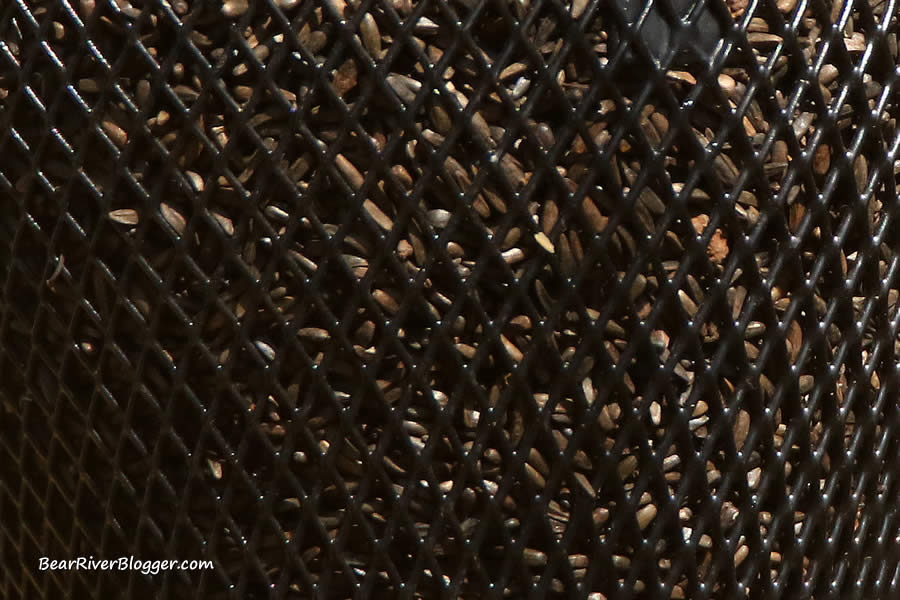
What type of feeder works best with thistle seed?
Thistle can be used in almost any type of seed feeder, but some feeders are designed more for this type of bird food than others. If you don’t use the right type of feeder with nyjer seed, then you run the risk of attracting unwanted species to the feeder and, as a result, wasting a lot of seed.
Pick a style of feeder that utilizes the natural feeding behavior of the goldfinch. You will greatly reduce the waste and will attract far fewer pest species of birds to the feeder.
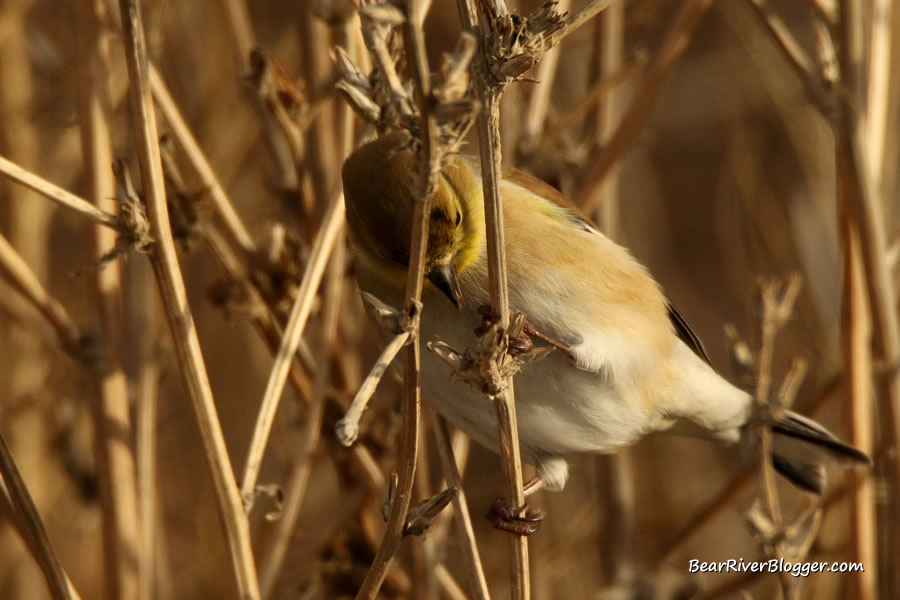
Goldfinches like to climb and hang on plants to search for and pick at their seeds, and if you choose a type of feeder that encourages this natural behavior, you will, in turn, instinctively keep away a lot of sparrows and other pesky birds that don’t usually feed in the same manner.
Thistle seed works in several types of finch feeders, such as sock feeders and tube feeders, but it is the cone-shaped mesh style feeder, shown in the image below, that I have found to work the best.
(We have found in our own backyards nyjer/thistle seed works very well in the mesh-style tube feeder.)
(As an Amazon Associate, I earn from qualifying purchases.)
It not only holds the thistle seed well, but the cone-shaped feeder is easy to fill and the mesh design also inherently helps discourage sparrows from using it, which is a huge benefit since house sparrows, in particular, can be quite wasteful at times at bird feeding stations.
This style of finch feeder is also large enough for over a dozen or more goldfinches to hang on it at one time, and this can be quite important during those hectic moments when numerous birds are at the feeder simultaneously.
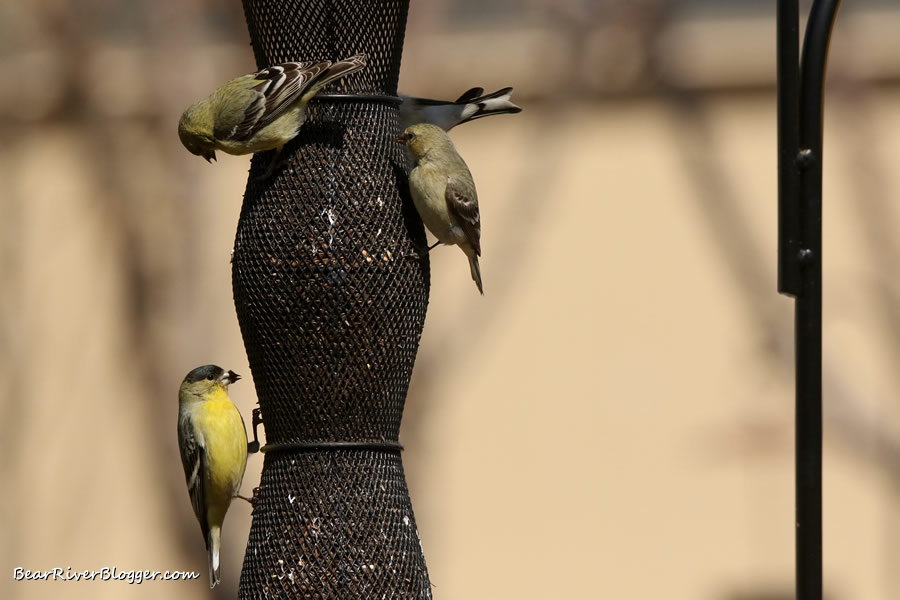
Some tube feeders only have perches for 2-6 birds, and once you start attracting a lot of goldfinches, you will find the birds oftentimes spend more time squabbling over perches than they do feeding unless you put out multiple feeders.
On a few occasions, I have had over a couple dozen goldfinches vying for a spot at the feeder.
This is more common during the winter months when the natural food sources are limited, but it can and does happen throughout the year as well, so having a large feeder makes it much easier for multiple birds to feed at once.
I do sometimes see house finches feeding alongside the goldfinches on a true goldfinch style feeder, but these climbing types of feeders are rarely used by other types of birds, such as sparrows and blackbirds, from what I have seen, which helps reduce other birds wasting feed.
What do goldfinches eat?
Almost exclusively, goldfinches eat mostly seeds, including seeds from trees, grasses, and a variety of plants. Some of the plant variety of seeds in a goldfinch’s diet include aster, sunflowers, and thistles. Seeds from alder, birch, elm, as well as western red cedar trees, are also part of the goldfinch diet.
Should I put out water for the goldfinches in my yard?
For years, I used to think water wasn’t very important in attracting birds to my backyard. I just assumed they easily found a water source elsewhere so there was little to no need in putting out some water for the birds.
This is actually one of the biggest misconceptions out there regarding backyard bird watching.
It wasn’t until after a summer rainstorm a few years ago where I watched a pair of house finches bathing and drinking in a small, shallow pool of residual water in the driveway that it occurred to me the birds are attracted to even the smallest pools of water, and they do indeed need a steady supply of clean water in my yard.
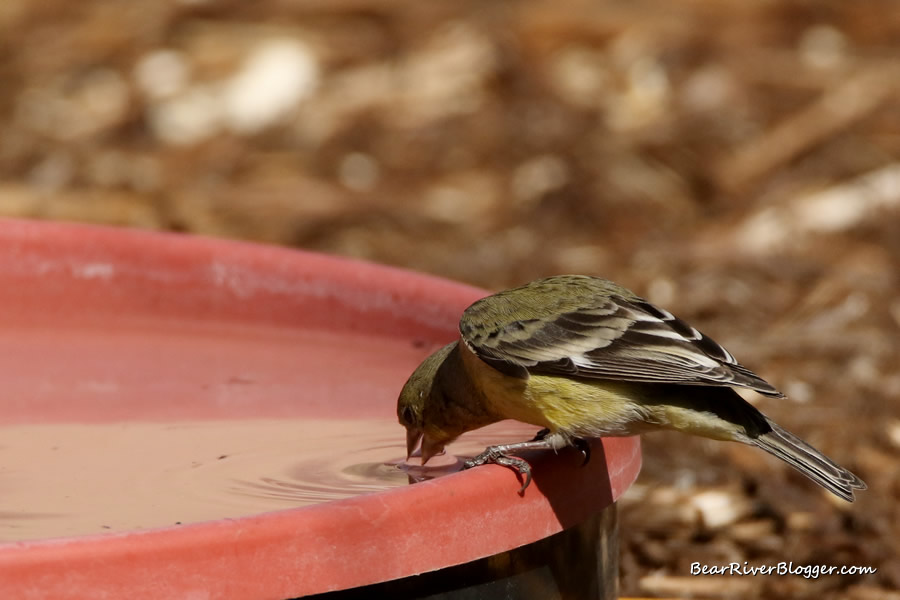
I live in a farming community and there is usually water nearby in the irrigation ditches.
It wasn’t until, however, I saw those finches bathing in the shallow water in my driveway just a few yards away from a ditch full of water, that it occurred to me the deep, fast-moving water in an irrigation ditch is extremely difficult for the birds to safely access.
I immediately went out and purchased a birdbath and have had several in my yard ever since.
(We use heated bird bath for the colder parts of the year to keep the water from freezing.)
(As an Amazon Associate, I earn from qualifying purchases.)
When all truth is told, if I had to choose between either food or water to attract birds I would opt to put out water for the birds. It’s cheaper, easier, and attracts a full range of birds year-round where several different types of foods and feeders are needed to bring in a wide variety of birds to the yard.
The downside is, however, birds spend far less time at the water than they do the feeder, so the opportunity to watch them is much more limited with just having water and no food available.
Truthfully, we should never assume birds have access to water, even if there are water sources around. Some water sources are quite a bit more dangerous and harder to access than others.
It is so simple to put a water source out for the birds in the yard, and by doing this, it gives the birds another reason to visit my garden area.
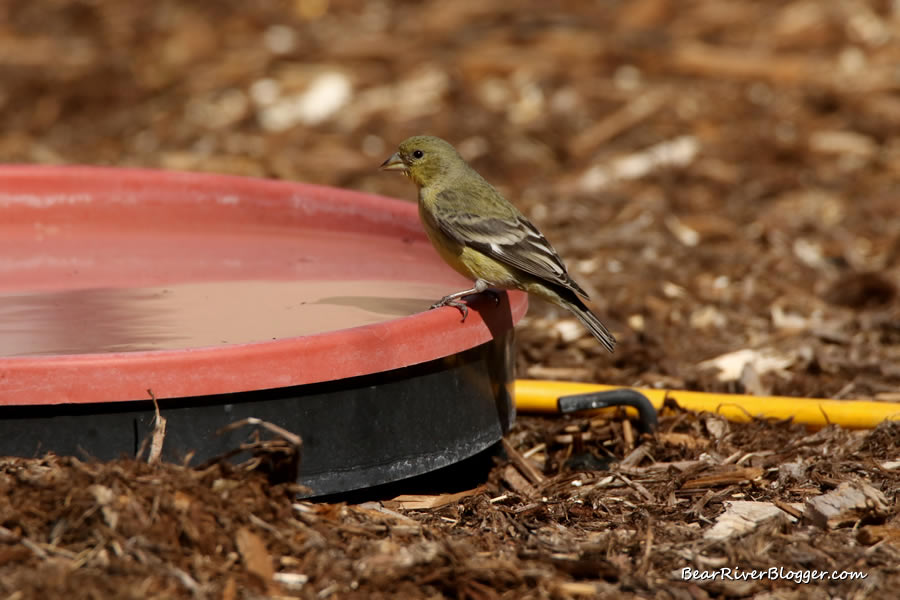
Nearby cover to help attract birds to the yard.
Besides food and water, a place to congregate and feel safe from predators is an important part of attracting birds to the yard.
This can be a bit harder and take a little bit longer to establish, however, than just putting out food and water but having some type of nearby cover for the birds will help attract and keep more birds in your yard.
One way we have found that’s fairly quick and easy to establish some cover is to leave a moderately sized pile of sticks and limbs somewhere in the yard.
This spring, my brother finished pruning his fruit trees and piled the limbs nearby to wait for disposal. It didn’t take long, only a matter of a day or two to be precise, for the birds to find it and start using it as a daily roosting spot.

Dozens and dozens of birds, including goldfinches and house finches, are now found in this tangled web of limbs all day long. Having such a place for birds to roost nearby during the day is a quick and easy way to attract birds to the feeder area, especially during early spring when pruning trees is a yearly ritual and cut limbs are, as a result, in abundance.
The intention now is to move the pile of limbs off of the concrete and restack it near the fence so it’s not intrusive for the patio, but still offers a place of sanctuary for the birds. Once the trees and bushes that were planted last year grow and offer a more permanent solution, this piling up of limbs will no longer be needed, but it is an easy way to establish a temporary patch of cover for your visiting birds.

Why have goldfinches stopped coming to my feeder?
Feeding goldfinches does take a little bit of time and effort. Part of this comes by way of cleaning and keeping feeders full of seed. The most common reason I have found why goldfinches have stopped coming to my feeder is the thistle seed has gotten wet and started to clump and mold over.
Keeping the nyjer seed clean and dry is important in keeping the goldfinches healthy and coming back to your yard. Regular inspection and cleaning of the feeder is a good habit to get into, especially during cold, wet months where mold can easily set it.
If by chance you noticed an abrupt drop in goldfinches to your feeder, the first thing I would do is empty and clean the feeder and put out fresh thistle seed. Check the bag and make sure none of the seed has started to mold as well. The most common reason I have found why goldfinches stop coming to a feeder is bad food, which usually comes from dirty, wet feeders.
The food and feeders are outside in the elements year-round so deciding to put out feeders for any type of bird is also a commitment to keeping the feeders clean and dry. It’s a small price to pay, however, to have such enjoyment watching a variety of birds, especially finches and goldfinches, come to the yard each day.
Do goldfinches eat sunflower seeds?
Yes, goldfinches can and will eat sunflower seeds. They are one of the most common and popular ingredients in many commercial seed mixes. You can also buy them as a stand-alone seed for feeding as well.
In addition to thistle seed, we put out a couple of feeders filled with nothing but black oil sunflower seeds, and the goldfinches do indeed feed on these feeders, but when there is thistle seed nearby, they almost always come to the thistle feeder over the sunflower seeds.
(We recently found out in our own backyards, shelled sunflower seeds are highly favored with lesser and American goldfinches, maybe more so than nyjer seed.)
(As an Amazon Associate, I earn from qualifying purchases.)
House finches are the birds most commonly found feasting on the black oil sunflowers, so our feeding regimen includes separate feeders offering either nyjer and black oil sunflower seeds to help attract both finches and goldfinches to the yard.
Recently, we started using shelled sunflower seeds and have seen some incredible results. Much of the time, the goldfinches in our yard would solely visit the shelled sunflower seed feeders and not even visit the nyjer seed feeders, unless there were too many goldfinches at the shelled sunflower feeders.
Shelled sunflower seeds are by far the most expensive seed we have ever used but, hands down, we think it brings in more goldfinches than even nyjer seed, which we love and still use today, in fact.
Because shelled sunflower seeds are fairly expensive, we don’t exclusively feed them and will start to only add them to our wild bird feeding during the winter months.
Conclusion
Feeding goldfinches is a most enjoyable activity and can easily be done with little effort or investment. A simple feeder is all you need to get started, and adding a water source and nearby cover will greatly enhance the bird feeding experience.

I have been feeding birds for many years now, and it is something I will never grow tired of. There is something so relaxing, so rejuvenating about watching birds in one’s own backyard, and offering a bit of food and water to our feathered friends is the least we can do for the enjoyment they can bring to our lives.
Feel free to subscribe to our blog and follow our passion for birds, butterflies, and nature. We offer our advice here on what works best for us in our bird feeding endeavors and hope it will help you enjoy bird watching and backyard bird feeding as much as we do.
Bird Watching Apparel
If you’re looking for birding related gifts and apparel for someone, take a look at our online store featuring some of our own photographs turned into unique gifts.
As a reader of our blog, we offer you 20% off all products on our store by using the coupon code save20 during checkout.
Visit our Bird Shirts and More online store to check out our products. New products are constantly being added so check back often.

